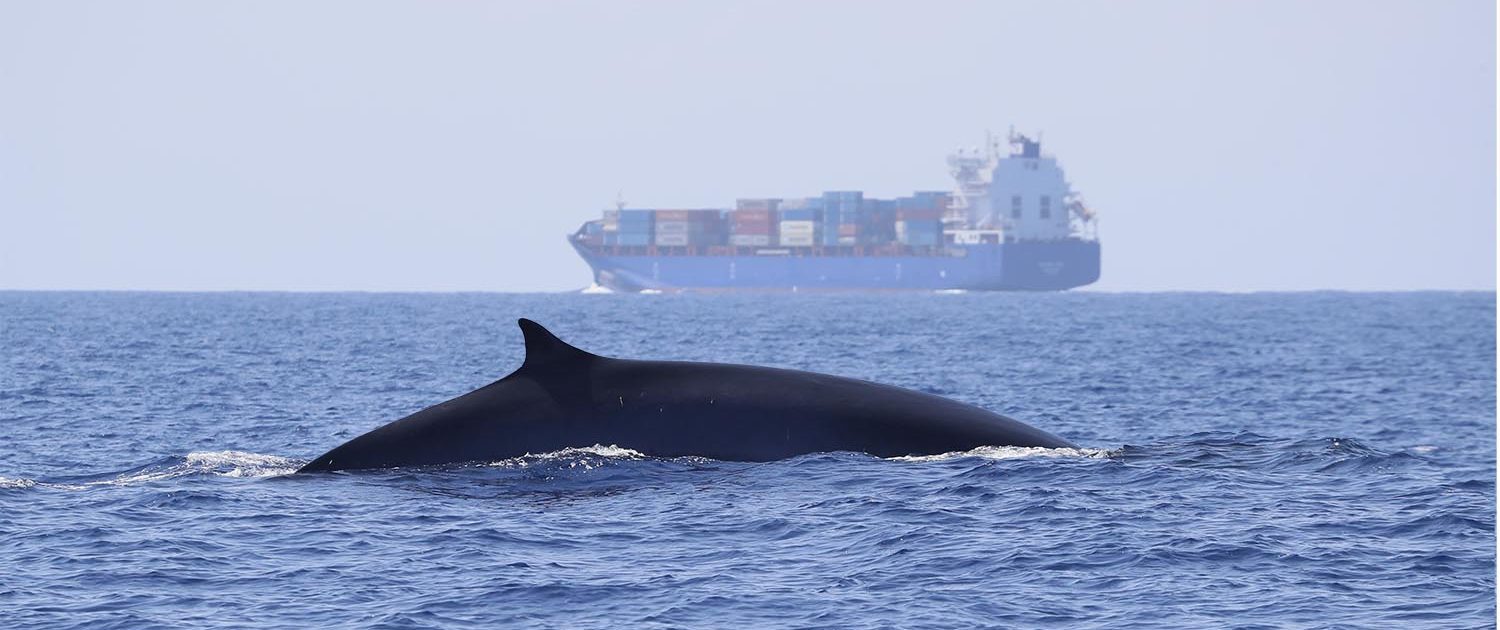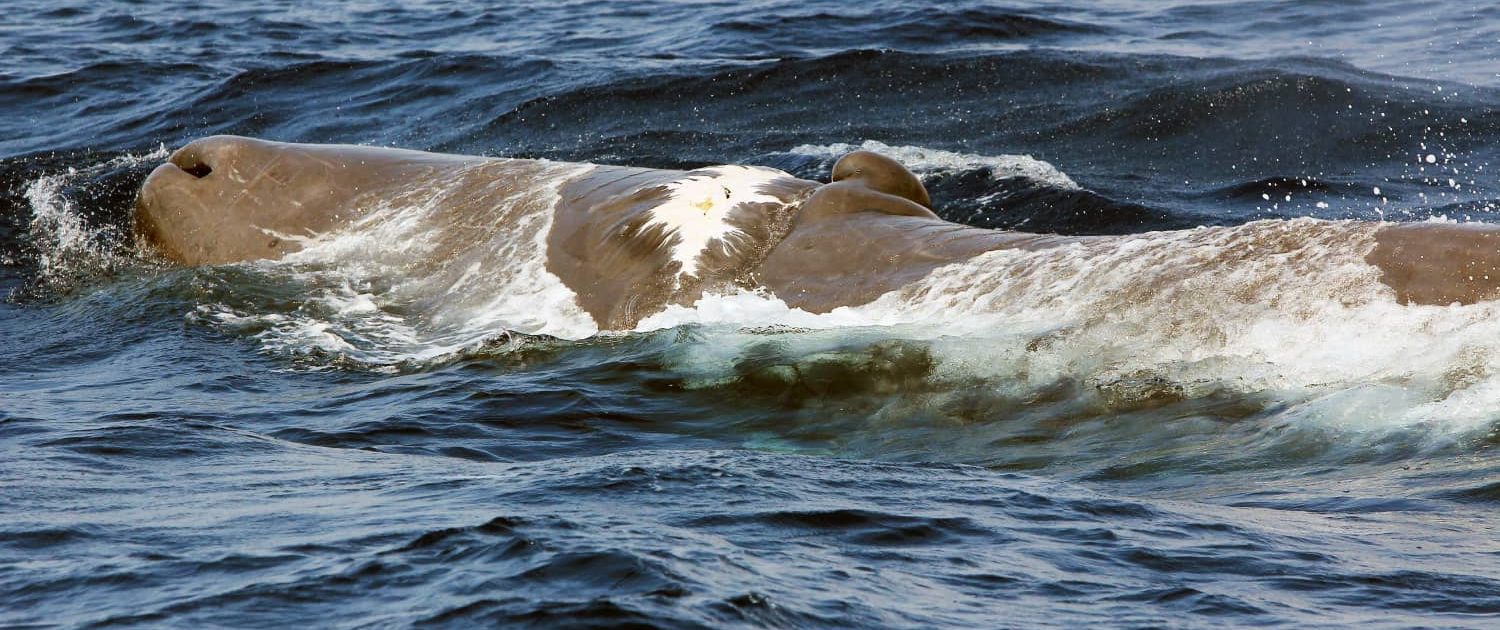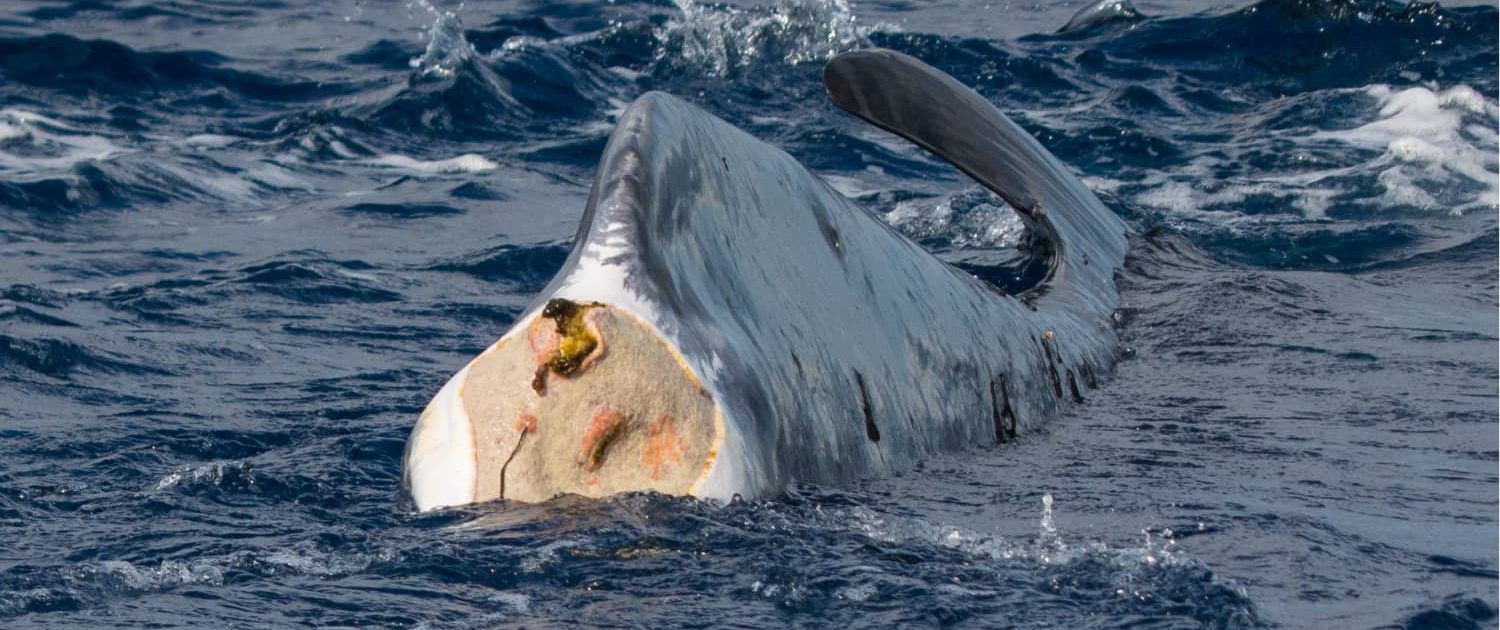On a collision course: fin and sperm whales threatened by large vessels
Collisions between ships and whales are a serious threat to the survival of marine mammals. It is a dramatic problem all over the world, but in the Mediterranean, and ironically in the Pelagos Sanctuary, an iconic Marine Protected Area for cetaceans, even more so. The North Western Mediterranean is actually one of the busiest seas in the world with large commercial harbours along its coasts such as Genoa, Toulon and Marseilles, and numerous cargo and passenger ship routes crossing it. It is estimated that maritime traffic will further increase dramatically in the coming years.
The two Mediterranean species of cetaceans most at risk for collisions are the fin whale (Balaenoptera physalus) and the sperm whale (Physeter macrocephalus). Many individuals showing large scars are regularly sighted, or found stranded along the beaches, but it is estimated that even more animals die and sink without anyone noticing.
When it comes to individual whales, researchers know several “testimonials” of collisions: among the “lucky” ones who survived a strike, is the sperm whale Freddy-Siram which has a large wound on its back and side, and Propeller, a fin whale with deep impressive parallel cuts on its body, unmistakably due to a collision with a large motor boat.
According to a recent study led by Tethys and financed by the Pelagos Permanent Secretariat, there are a total of 426 large cetaceans with signs of collision recorded in the Sanctuary alone, of which 285 have been found stranded and 141 survived, but the figures are definitely underestimated. This is due above all to the fact that only a fraction of dead animals end up stranded or is detected at sea.
The two species of whales regularly living in the Mediterranean are threatened by large boats in different ways: sperm whales, which in the central area of the Sanctuary are spotted mainly close to coast, roughly 10 miles away, are often found right on the route of cargos. On the other hand, fin whales, which instead forage offshore, in deep waters, are more exposed to collisions with passenger ships that cross the basin between the mainland and the islands.
Since they use different habitats, some possible solutions, such as moving the routes, would not work for both species at the same time. Another option would be to impose a drastic slowdown of vessels, since the risk of collision is directly proportional to speed, which today is constantly increasing: however, this often clashes with the needs of large shipping companies.
When it comes to large ships there are various other difficulties: from the bridge of a freighter tens of meters long it may be impossible to spot an animal right under the bow; furthermore sightings (by Marine Mammal Observers, for instance) can be done effectively only with a flat sea and only in daylight. In addition, cargo and other giant vessels have such a momentum that they often cannot slow down or maneuver in time to avoid a collision. The result is that sometimes people on the boat do not even realize that they have hit a whale
.
Maddalena Jahoda
Tethys has brought the problem of collisions to the attention of institutions and of the public already over 20 years ago, and has continued to monitor the impact on large cetaceans over time. More recently Tethys has conducted a study headed by Simone Panigada and financed by the Permanent Secretariat of the Pelagos Agreement, published in 2020: “Proposal to develop and evaluate mitigation strategies to reduce the risk of ship strikes to fin and sperm whales in the Pelagos Sanctuary ”, which can be found here
The study was carried out in collaboration with the British Antarctic Survey, International Fund for Animal Welfare, QuietOceans, Souffleurs d’Ecume, WWF France.











